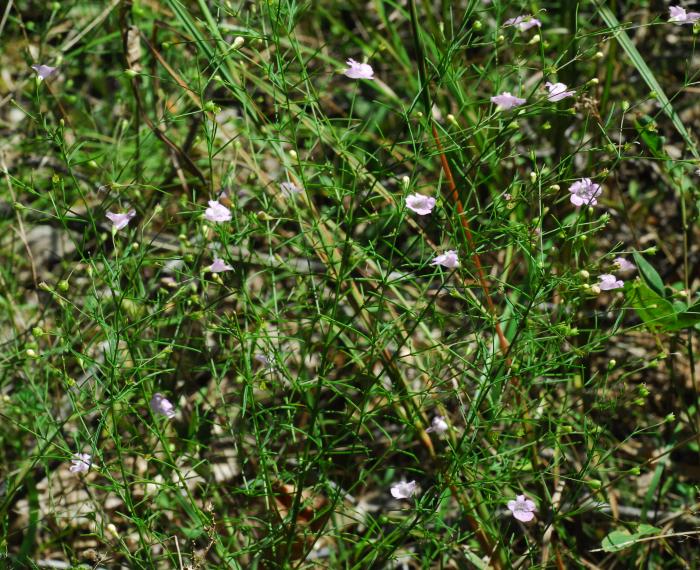Agalinis gattingeri (Small) Small
Rough-Stemmed Gerardia

Native
CC = 7
CW = 5
MOC = 57
© SRTurner
Agalinis gattingeri (Small) SmallRough-Stemmed Gerardia | |
 |
Native CC = 7 CW = 5 MOC = 57 |
© SRTurner |
|
Family - Orobanchaceae Habit - Annual hemiparasitic forb. Stem - Rounded to bluntly angled, with numerous spreading branches.
Leaves - Threadlike to linear, entire, not stiff, slightly roughened.
Inflorescence - Open and loose, few-flowered, often solitary flowers at branch tips. Calyx - Calyces 3-5 mm long, broadly bell-shaped, about as long as wide at flowering, the thickened, triangular lobes 0.5-1.5 mm long, much shorter than the tube, glabrous or nearly so, the sinuses between the lobes at flowering broadly U-shaped.
Flower - Corollas 10-16 mm long, pink to light pink, finely hairy externally, especially on the lobes, the throat with purple spots, pubescent with relatively long multicellular hairs at the base of the upper lobes, the upper 2 lobes spreading to bent backward at full flowering.
Fruits - Globose, 4-5 mm, glabrous. Flowering - August - October. Habitat - Savannas, forest openings, upland prairies, glades, often on acidic substrates. Origin - Native to the U.S. Lookalikes - Other species of Agalinis. Other info. - This common species is easily confused with A. tenuifolia, which is also common. Relative to A. tenuifolia, this species has foliage which is green (never purplish-tinged), corollas which are hairy in the throat (care must be exercised to avoid mistaking filament hairs for corolla hairs), and upper corolla lobes which are usually reflexed. It is found througout the state except for regions toward the east and north of the state. Missouri is its state of greatest abundance, though its distribution also extends, in scattered form, throughout most of the U.S. Midwest. Photographs taken at Little Lost Creek Conservation Area, Warren County, MO, 9-16-2015 (SRTurner). |